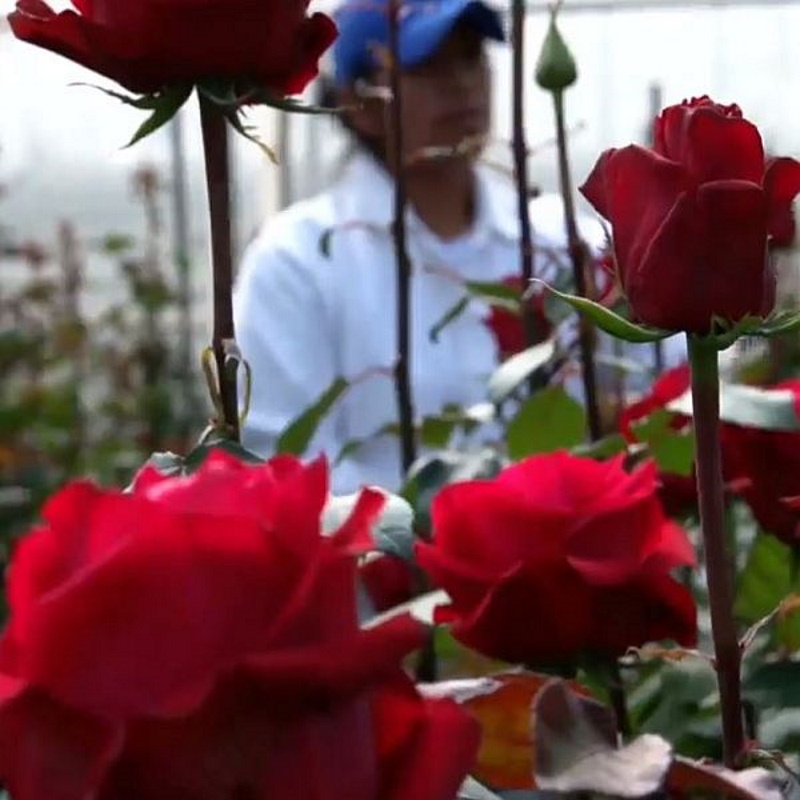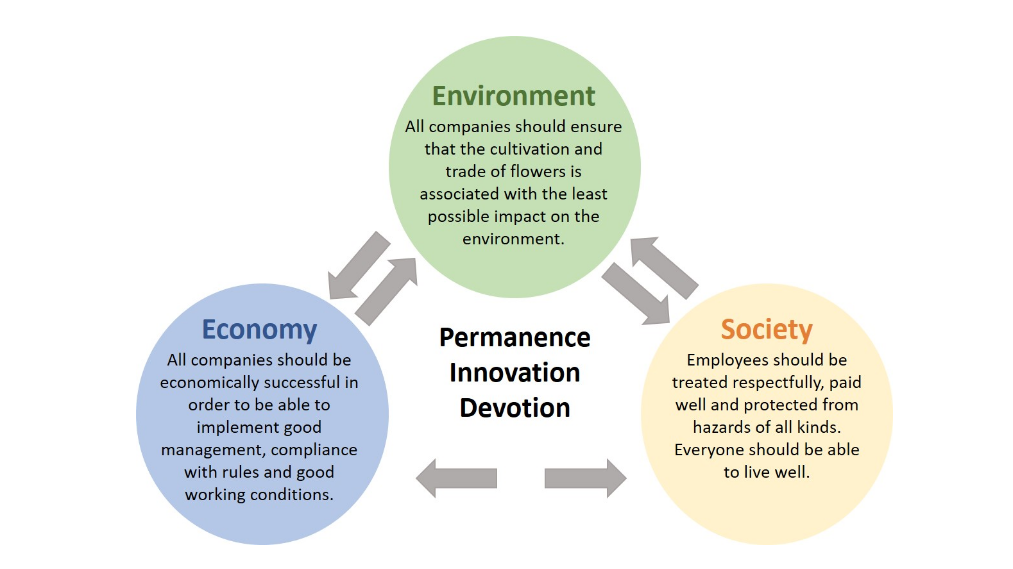Transparency, our responsibility for people and the environment
Growing roses in Ecuador
Watch this video to see how roses are grown in Ecuador. After that they will understand the statement " The best and most beautiful roses in the world come from Ecuador".
The conditions for growing roses in Ecuador are perfect. There you always have spring weather, so to speak. Due to the high altitude and the low latitude (equatorial) there is a high solar radiation with moderately warm temperatures.
Qualified personnel ensure high quality in the cultivation process.

|
Rose harvest in Ecuador
The video shows how the roses are handled from flower cutting to shipping to the airport.
The roses are transported pre-cooled from the long greenhouses to a packing house. There, sorting, bundling, and elaborate protective packing for shipping takes place.
Before shipping, the roses are provided with nutrients and water and cooled down to 2 degrees Celius.
But see for yourself....

|
CO² footprint
An essential aspect for the assessment of the ecological balance of cut flowers is the energy consumption during cultivation and transport.
Since the beginning of the 80s, a constantly growing part of the flowers sold in our markets comes from overseas. In the sunny countries there, very little energy is required for the actual cultivation and for the construction and maintenance of the internal infrastructure. In contrast, the solid glass plants in northern Europe with their heating and lighting systems consume vast amounts of energy. According to current opinion, the carbon footprint of flower cultivation in the countries of the äquatorial highlands is many times more favorable even when they arrive in Europe as Rückfracht by air.
Although flowers worth many billions of dollars have taken this route for nearly four decades, there is hardly any reliable information über the CO2 footprint of flowers. A single scientific study was published in 2007, more than a decade ago. This study by Cranfield University in England concluded that up to six times less fossil energy is used for imported flowers than for Dutch greenhouse products (*1).
To the advantage of Übersea roses, the following conditions have since changed:
(1) Most farms are now equipped with computer-controlled irrigation systems that can be used to deliver fertilizer to the plants with virtually no loss. This neutralizes a factor that ten years ago was still to the disadvantage of Übersee -productions.
(2) The means of transport have become faster and better, so that considerable quantities reach us in climate-controlled sea containers.
(3) Innovations in modern aircraft have reduced fuel.
To the benefit of greenhouse flowers, conditions have since changed as follows:
(1) Lighting is now by LED bulbs and is used more effectively.
(2) Renewable sources in the energy mix have increased slightly.
The Gerächt is adamant that recent studies on the Ökobilanz of cut flowers from Dutch universities are available, but they are not published because they are harmful to the interests of gardeners there.
In the sense of a genuine transparency über this connection new, independent and methodically überprprüfbare investigations are necessary.
*1 - Für the study a short summary is offered in English. This abstract does not allow for an assessment of the baseline data, methodology, and statistics. The study is focused on cut roses: Cut_roses_for_the_British_market.pdf

Sustainability
Sustainability refers to a way of life and a way of doing business that includes the protection of the environment, the preservation of biological diversity, a low consumption of resources and a fair distribution of wealth. It pursues the goal of ensuring a dignified life on earth for present and future generations in the long term.
In the cultivation of and trade in flowers and plants, this obligates all participants in the value chain to use resources and the environment sparingly, to expand the economic strength of the businesses in the long term, and to ensure social justice for the employees. These goals are to be pursued simultaneously and in a balanced manner in a process of continuous improvement.











